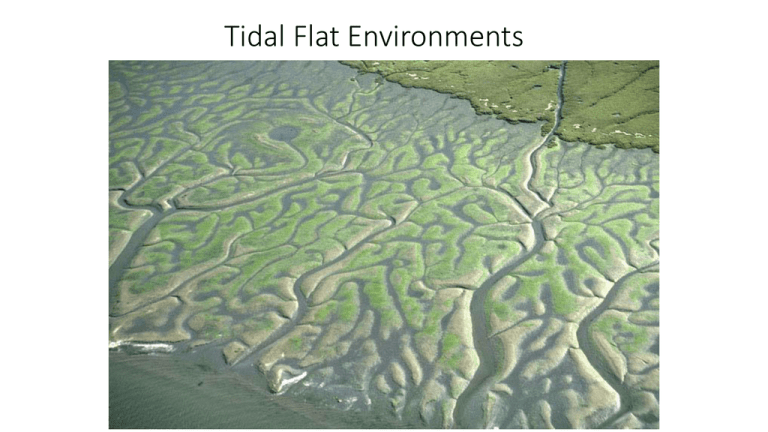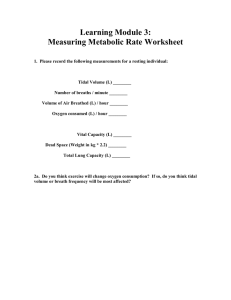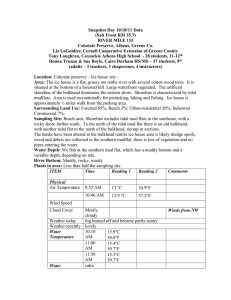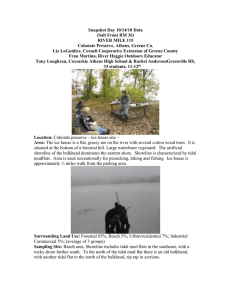Tidal Flat Environments
advertisement

Tidal Flat Environments Tides are a complex product of gravitational attraction (from the moon and the sun) and Earth’s rotation Lunar tidal bulge rotates around Earth with a period of 24 hours 50 minutes But the simple tidal bulge is disrupted by the continents, forms several cells around amphidromic points Tidal range is highly variable, depends more local coastline amplification and development of standing waves (seiches) Tidal range governs speed of tidal currents during flood (rising) and ebb (falling) flows Tidal rhythmites showing spring / neap cyclicity (Ediacaran, Australia) 2 weeks Grain size and sedimentary structures can be predicted if you know source of energy and source of sediment Energy Sediment Bidirectional paleocurrent indicators (especially cross-stratification) are diagnostic of tidal deposition Herringbone cross-stratification Flood current: tide going in Ebb current: tide going out Gradation from flaser bedding (rippled sand with mud drapes) to lenticular bedding (isolated sand ripples in mud) as grain size fines and energy decreases Tidal channels have point bars with lateral accretion similar to meandering fluvial Inclined heterolithic stratification (IHS): Bidirectional ripples perpendicular to bounding surface (flood and/or ebb stage) Large-scale mud drapes (slack-water stage) Common reactivation surfaces Inclined heterolithic stratification (IHS) Higher-energy in subtidal channels leads to larger dune cross-bedding (but still bidirectional or frequently containing mud drapes) “Sigmoidal” cross-bedding with mud drapes




